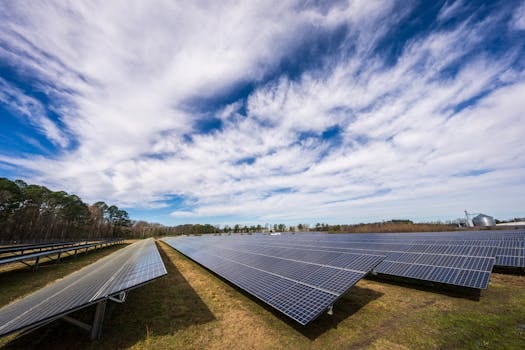Living Off-Grid in 2025: Tech Innovations Making It Possible
Imagine waking up to the soothing sounds of nature, surrounded by endless greenery and the soft glow of natural light. This may sound like a dream, but thanks to rapid technological advancements, it is now possible to live completely off-grid. In 2025, we can expect to see a whole new level of off-grid living, powered by innovative technologies that will make self-sustainability and environmental conservation more attainable than ever before. Let’s take a closer look at some of the groundbreaking tech innovations that are shaping the future of off-grid living.
The Rise of Solar Energy
One of the biggest challenges when it comes to off-grid living is finding a reliable and sustainable source of energy. In the past, off-grid homes heavily relied on generators, which were not only noisy and expensive, but also highly polluting. However, with the advancement of solar panel technology, we can now harness the power of the sun to generate clean and renewable energy.
Solar energy systems have become increasingly popular in recent years and are expected to dominate the off-grid market in 2025. These systems are easy to install, require minimal maintenance, and provide a consistent source of energy without any harmful emissions. With the continuous development of more efficient and affordable solar panels, off-grid homes will be able to generate enough clean energy to power their entire household.
Smart Grid Technology
In addition to solar energy, the concept of a smart grid has gained significant traction in recent years and is set to become a crucial component of off-grid living in 2025. Simply put, a smart grid is an advanced power system that uses digital communication technology to monitor and manage energy distribution in real-time.
A smart grid enables off-grid homes to be more self-sufficient by optimizing energy usage, managing energy storage, and even selling excess energy back to the grid. With the help of smart grid technology, off-grid communities can reduce their reliance on traditional power grids and become more energy-independent.
Water Harvesting and Purification
When it comes to off-grid living, access to clean water is just as important as a reliable source of energy. In a world where safe drinking water is becoming increasingly scarce, off-grid homes in 2025 will rely on innovative water harvesting and purification systems to meet their water needs.
Thanks to advances in technology, it is now possible to harvest and purify rainwater or even moisture from the air to create safe and drinkable water. From solar-powered desalination systems to atmospheric water generators, these technologies will make it possible for off-grid communities to become self-sufficient in terms of their water supply.
Smart and Sustainable Home Automation
A big part of off-grid living is learning to live within your means and making the most out of limited resources. However, this does not mean sacrificing convenience and comfort. In fact, with the help of smart home automation systems, off-grid homes can be both self-sufficient and highly efficient.
In 2025, we can expect to see a wide variety of smart home systems that will help off-grid homeowners better manage their energy and water usage. For example, smart thermostats can adjust heating and cooling based on weather conditions, while smart irrigation systems can optimize watering schedules for gardens and crops. These technologies will make off-grid living not only possible but also highly comfortable and sustainable.
The Future of Off-Grid Living
There is no doubt that off-grid living will continue to grow in popularity in the coming years, and with the help of innovative technologies, it will become more attainable and practical. From sustainable energy and water solutions to smart home automation, the future of off-grid living is looking bright and promising. As we strive to reduce our impact on the environment and become more self-sufficient, these tech innovations will play a crucial role in shaping the way we live off-grid in 2025.








